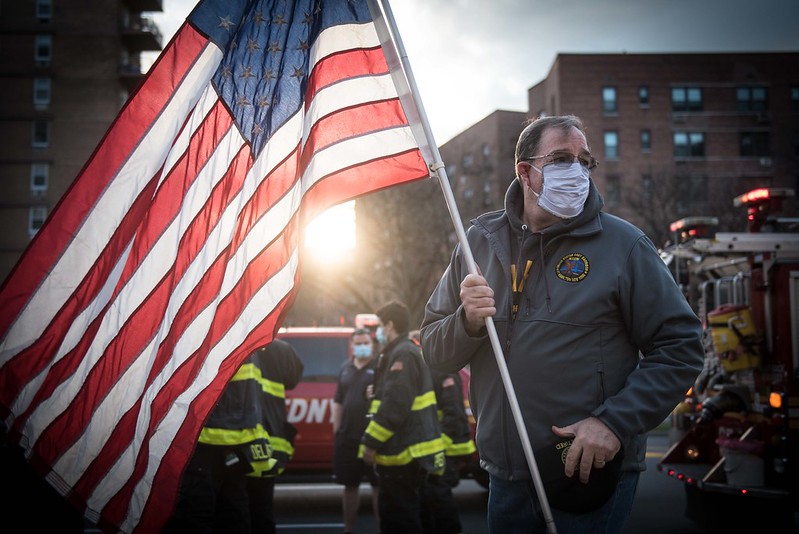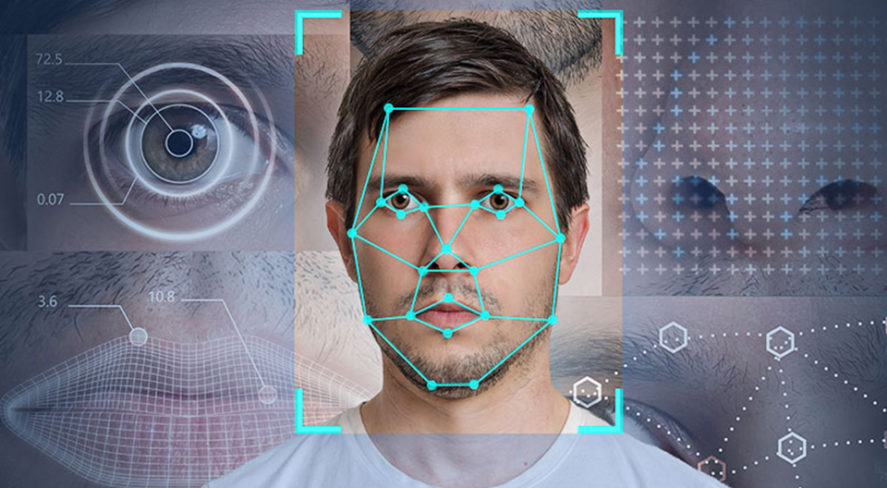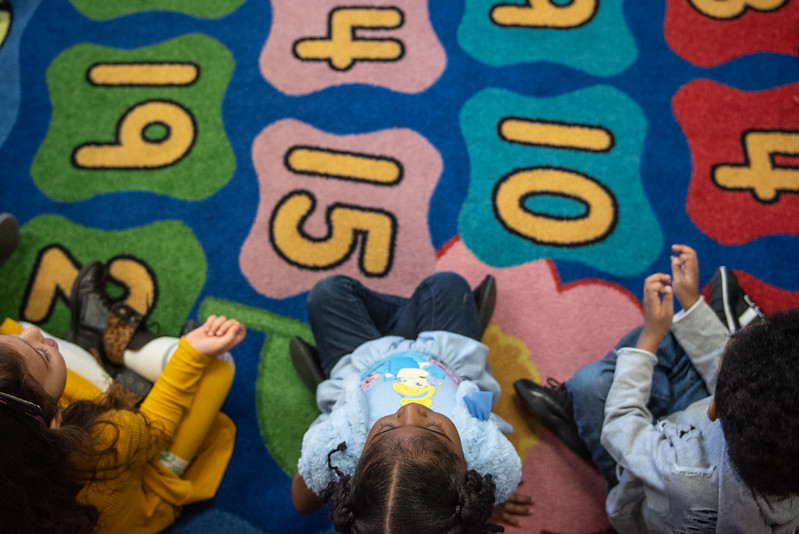In Our Covid Recovery, A Return to Humanity

(photo: Michael Appleton/Mayoral Photography Office)
The COVID-19 pandemic has taken so much from us all – over 100,000 lives taken too soon; months spent alone; businesses shuttered forever; and birthdays, proms, goodbyes, graduations, ball games, firsts and lasts missed. It must mean something, but only we can give it meaning through our actions, preparation, kind gestures, and deep love of all that we took for granted, including our shared connection. We have an opportunity to ensure all that we lost was not in vain. As a nation, as a people, we have a solemn obligation to not simply recreate what we had, but to build something better, stronger, more resilient, and more enduring.
We have this immense and meaningful opportunity because of those who took swift action, sacrificed their well-being to serve others, and risked ridicule and failure to save lives and curtail the spread of COVID-19. Their actions to beat back this twisted bunch of RNA undoubtedly mitigated the potential for an even more complete disaster. We owe them a debt of gratitude, but also a new and better normal.
A return to the way things used to be is impossible. We are, as a people, forever changed. Yes, state and federal guidelines for an economic reopening are being implemented in some regions, and we should proceed with these plans based on data, rationale, and the advice of experts, lest we risk going through this experience again. However, reopening is only one piece of the puzzle.
The future is uncertain, but we must be better prepared for the next crisis. For many who confronted COVID-19, it was not an absence of will that kept them from acting as quickly and effectively as possible, but a lack of the necessary tools. Insufficient testing (especially early on), inadequate supply of personal protective and emergency medical equipment, and low levels of health-care capacity are just the most obvious gaps. There were and are more. Data systems and sharing had to be developed and evolved on the fly and many localities had to creatively re-assign staff and rely on volunteers to perform basic levels of contact tracing.
This will not be the last time an infectious disease upturns our lives. To prepare for future challenges, we must increase emergency stockpiles; create supply lines that are more accessible and reliable during periods of global crisis; and streamline regulatory regimes that slowed the approval of needed screening tools and limited innovative solutions. Further, we should generally seek to improve disease surveillance, modernize disease tracking by creating a National Infectious Disease Forecasting Center (as recommended by many, including former F.D.A. Commissioner Dr. Scott Gottlieb), and increase contact tracing capacity by expanding the workforce dedicated to this task and by utilizing app-based technologies.
As a society, we must do more to elevate medical and public health professions and encourage more people to enter these important fields. State governments should look to increase the authority and autonomy of nurse practitioners and physicians’ assistants and permanently reduce restrictions on out-of-state practitioners. Public health professionals should help develop high school curriculums that incorporate specific units on infectious diseases and develop basic public health skills and competencies that could potentially be used on a volunteer basis during a pandemic. All levels of government should work to bolster the ranks of public health service corps and medical reserve corps through tax benefits, recruitment efforts, and increasing paid service roles. As recommended by the “Roadmap to Pandemic Resilience” from Harvard’s Edmond J. Safra Center for Ethics, National Guard units in each state should add Health Reserves Corps.
Much has been lost and foregone over these months. It would have been easy during this time to lose our connection to one another, but in so many ways that connection deepened. Health-care professionals and first responders, including those who came out of retirement, consistently put the well-being of their patients before their own. People from all walks of life went to work making masks, gathering supplies, delivering meals, and caring for others. Tens of millions of dollars were donated to support COVID-19 response and relief efforts. Neighbors sang in the streets; teachers adapted on the fly to a new paradigm; friends and families celebrated milestones with impromptu parades and honking horns; and millions of individuals stayed at home and stopped the spread.
Sadly, there was no permanent cessation of political jabbing, name-calling, and anger. However, there were plenty of positive lessons to be learned. Experts and expertise seemed to regain the public’s and some political leaders’ reverence. The critical role of federalism in our republic was highlighted by the swift and well-thought-out actions of many governors, while the benefits of localism were clear, given the creativity and proactiveness of counties throughout New York and the nation. My experience during this emergency has been one of practical and congenial bipartisanship, not the mudslinging you see on the national news.
And yet the most important lesson is not about politics but people. It is about how important our shared connection is to our overall well-being. It is also about this opportunity to glimpse, if only briefly, the lives of those less fortunate – those who face food insecurity every day, those who live paycheck to paycheck, and those who face crippling anxiety and fear of the world outside their doors.
When we create our new normal, let us not forget those lessons. Let our recovery herald in a return to a better humanity in which we cherish those connections we have and work to form stronger bonds with our wider community. Let us return to a better humanity that takes care of those less fortunate by providing a strong safety net to catch those who have fallen through the cracks and that offers a sturdy ladder to aid in the climb to prosperity.
The world has changed, and we must change with it, if for no other reason than that we owe all those lost and all who lost, sacrificed, and worked so hard a better world, a new normal. We owe them a return to a stronger, healthier, and more connected humanity.
***
Marc Molinaro is the Dutchess County Executive. On Twitter @MarcMolinaro.
***
Have an op-ed idea or submission for Gotham Gazette? Email This email address is being protected from spambots. You need JavaScript enabled to view it.
The Case for Touchless Interface Technologies in a Post-COVID-19 World

Facial recognition could be useful in the post-coronavirus world (photo: Security Industry Association)
As a native New Yorker, I am saddened that New York has been hardest hit by the COVID-19 virus. The very way of life for New Yorkers – close living and working conditions, reliance on a round-the-clock crowded mass transit system, a vibrant restaurant and bar scene, movie and live performance theaters, national and international transportation hubs, sporting facilities with tens of thousands of seats and over a million children in the public school system – has made the region particularly vulnerable to the novel virus.
We must be real about how long this disease will be with us, its lethal nature and how it has changed our lives. We must also be real about what steps we take to mitigate the impact of COVID-19, both through informed policies and through deployment of the right technologies that can help prevent the spread of this and other infectious diseases in the future.
Support is growing for touchless interactions, to protect the most vulnerable in our communities and our essential workers. Touchless solutions for access or screening required for entry to an area could be game-changers in reducing the spread of the virus and improving public safety.
These solutions can range from relatively low-tech ones like wave-to-open switches, motion sensors, and wireless transmitters to technologies developed to address more complex needs. Many hospitals already use facial matching technology to eliminate the need for frontline health care workers to swipe badges or type in codes to verify their credentials. By simply showing their faces, they are allowed access to clean rooms and other secure facilities. Reducing contact with potentially contaminated surfaces is critical to prevent our health care heroes – who are putting their lives on the line to help others – from becoming infected.
Programming an automatic building or elevator door to open for users would eliminate thousands of touches per day by human fingers and hands. In addition, facial matching technology can ensure that only authorized individuals are permitted to enter a building or workspace. For commercial buildings, thermal technologies can help initially screen entrants at a distance for elevated body temperature, identifying those who may need further testing before potentially exposing coworkers and others to the virus.
As people begin to travel by planes, trains, or buses at any of New York’s major transportation hubs, they will need to pass through security checkpoints, exchange documents with officials, and sit in closed, cramped spaces with scores of strangers. Touchless technologies can decrease the risk of spreading the virus and increase overall passenger safety. For example, New York’s John F. Kennedy International Airport uses facial matching technology to provide touchless security and allow some international travelers to board flights without exchanging boarding passes.
Despite these benefits, some cities have attempted to limit facial matching and other biometric-based or electronic security technologies, even banning their use altogether. In New York, members of the City Council have proposed making it much more difficult for biometric technologies to be deployed for building access and security, and even mandate the use of physical keys in places where they were phased out in favor of electronic systems decades ago. Such restrictions would prevent proven and tested technologies from being used to protect the health and safety of New Yorkers.
Concerns about facial matching technology have garnered much media attention over the last year. Contrary to popular misconceptions, the accuracy of this technology is in fact reaching that of automated fingerprint comparison, which is generally viewed as the gold standard for identification. The National Institute of Standards and Technology (NIST), the world’s leading authority on facial matching technology, has concluded that the software it tests is 20 times better at searching a database to find a matching picture than it was in 2014, and a NIST report last year recorded “close to perfect” results with miss rates averaging just 0.1 percent for the most accurate systems.
Advanced technologies like facial matching offer ready, touchless solutions to many of the challenges we will face in a post-COVID-19 world, which must be implemented in ways that respect privacy while also allowing our society to use science and innovation to be healthier and safer as we seek a return to a more normalized life. The Security Industry Association believes that all technology products must only be used for purposes that are lawful, ethical, and nondiscriminatory. If we work together and embrace it, touchless interface technologies can be one of our formidable frontline defenses to help reduce the spread of COVID-19 and other deadly diseases.
***
Don Erickson is CEO of Security Industry Association. On Twitter @SIAonline.
***
Have an op-ed idea or submission for Gotham Gazette? Email This email address is being protected from spambots. You need JavaScript enabled to view it.
Building a Financial Foundation for Our Children’s Future on 529 Day

529 accounts allow college savings for children (photo: Michael Appleton/Mayoral Photography Office)
In the face of profound economic hardship and uncertainty, families and school communities across one of the most diverse and hardest-hit areas of our city are coming together today in recognition of their collective work to build a financial foundation for their children’s futures.
Today, May 29th, is 529 Day.
529 Day, named after 529 college savings plans, which are investment accounts specifically designed for college and career savings, is an annual opportunity to build community around preparing for college and career training. This year’s 529 Day comes as New York City’s communities — particularly its low-income communities, communities of color, and immigrant communities — are bearing the brunt of a public health and economic crisis like nothing we have seen in our lifetimes.
School District 30 in Western Queens, which spans an area from Long Island City and Astoria across to East Elmhurst, Jackson Heights, and part of Corona, is at the epicenter of the epicenter of these compounding crises. Tragically, these are the same families and communities that are among the least likely to benefit from the federal stimulus programs passed to date.
And yet this community is joining together, virtually, to mark the fact that more than 10,000 of their kindergarten, first-grade, and second-grade students already have a financial asset set aside for their educational future through the NYC Kids RISE Save for College Program, a public-private-community partnership initiative run by the nonprofit NYC Kids RISE.
Research has shown that a child in a low-income household with a college savings account of just $1 to $500 is three times more likely to go to college and more than four times more likely to graduate than a child without an account. 529 plans are the country’s main college and career savings tool, providing access to investment earnings alongside federal and state tax breaks. In practice, however, the benefits of 529 plans have overwhelmingly accrued to families toward the top of the income ladder. In 2014, just one out of every 91 children in the lowest-income New York City neighborhoods had a NY 529 account, compared to one out of four children in the highest-income neighborhoods.
Today, about 95% of K-2 students across this diverse school district have a 529 account with money set aside for their future. Over the past three years, 39 district and charter elementary schools, thousands of families, community leaders and partners, city government agencies, and state government offices have worked together through the Save for College Program to build financial assets and promote college- and career-going expectations for every participating student, regardless of immigration status or income. To date, this community has collectively deposited more than $3.3 million toward these young students’ educational futures through contributions from local organizations and businesses, philanthropy, and families’ own savings.
To mark 529 Day 2020, we have joined the schools and families of District 30 for virtual financial education lessons, a virtual town hall on balancing immediate financial needs with long-term financial goals, and a social media conversation using the hashtags #Together529 and #Juntos529. It is a reminder that, despite the immediate crisis, District 30’s students will continue to have options for their future because of the work their families and communities are doing today to prepare. In a moment of darkness, our children’s dreams and possibilities continue to shine bright.
Still, there is so much more to be done. The COVID-19 crisis threatens to widen existing income and wealth gaps in our city, further fray families’ already dwindling safety nets, and harm the long-term educational and economic trajectories of New York City’s children.
To ensure a full and equitable recovery, we need to invest more deeply in the financial security of every family, particularly those who are already most economically vulnerable. We need to continue to find ways to progressively drive assets toward communities of color and immigrant communities — regardless of immigration status — to both help provide a cushion in times of crisis and equip these families to succeed in the long-term. Indeed, initiatives that bring neighborhoods together to build financial resources and resiliency for every family must be a core component of the response to this crisis.
If we know anything, it’s that none of us got here, or go anywhere, on our own. More than ever, we owe it to one another to make sure all of our kids have a real financial asset waiting for them for their future. We hope you will join us in celebration of that vision on 529 Day.
***
Debra-Ellen Glickstein is the executive director of NYC Kids RISE. Lorelei Salas is the commissioner of the NYC Department of Consumer and Worker Protection (DCWP), which houses the City’s Office of Financial Empowerment, and an ex-officio director of NYC Kids RISE. On Twitter @GlicksteinDebra, @LoreleiNYCDCA, & @NYCKidsRISE. Join the conversation by posting on social media using #Together529 & #Juntos529.
***
Have an op-ed idea or submission for Gotham Gazette? Email This email address is being protected from spambots. You need JavaScript enabled to view it.




